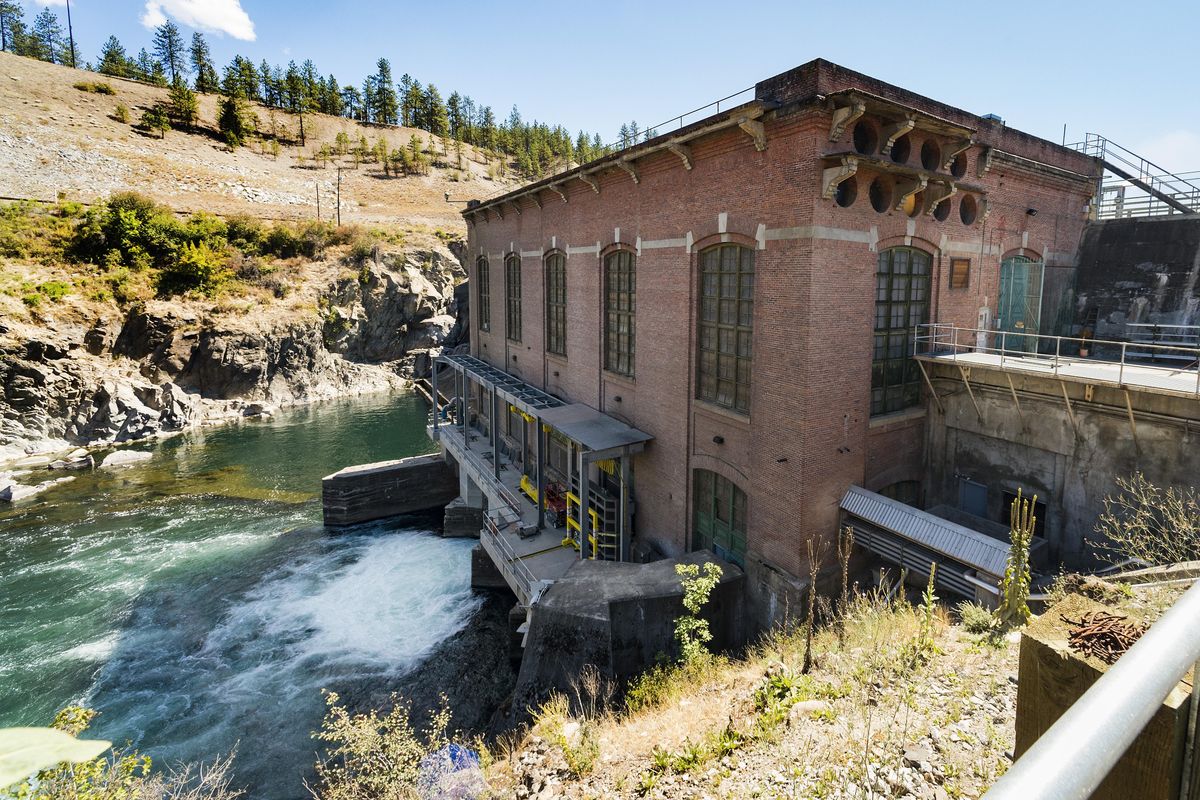Nine Mile upgrade part of Avista’s plan to keep dams humming

More than a century ago, engineers harnessed the power of the Spokane River as it rushed through a narrow canyon at Nine Mile Falls.
Nine Mile Dam was built to provide electricity for the street cars owned by the Spokane & Inland Empire Railroad Co. A few years later, Avista Corp. bought it from the railroad to help supply the Inland Northwest’s growing electric needs.
The 108-year-old dam is still producing megawatts for Avista customers, but it’s showing its age. To keep the dam operating reliably, the Spokane-based utility recently spent $77 million to replace two of Nine Mile Dam’s original generating units.
“It’s kind of like replacing the engine on a car with 300,000 miles,” said Andy Vickers, Avista’s director of generation production. “They’re going to run another 40, 50 or 60 years.”
The new generating units are part of $108 million in upgrades planned at the dam over eight years.
Nine Mile Dam is one of six Spokane River dams owned by Avista. Despite their age, utility officials say the older dams remain a stragetic asset and a good investment. Dams on the Spokane River produce about 10 percent of the utility’s electricity, all of it carbon-free.
As Avista makes its case to state regulators for higher electric rates in 2017, the utility is citing Nine Mile Dam on its list of big capital projects. Avista will spend about $375 million this year to update and replace aging infrastructure, and about $400 million each year through 2020, said Casey Fielder, a utility spokeswoman.
“Capital investments are the major drivers behind our rate requests,” she said.
Other dam projects also are on the list, Fielder said. The 106-year-old Little Falls Dam on the lower Spokane River is in the midst of a $52 million powerhouse redevelopment that will run through 2018. Post Falls and Long Lake dams also have major upgrades on the drawing board.
Washington’s Utilities and Transportation Commission is reviewing Avista’s request for higher base electric rates, with a decision expected this winter. Customers can weigh in at two public hearings this month.
The utility is asking for an increase in electric revenues next year of $38.6 million, or 7.8 percent, which would cost a typical household about $7 more per month.
The commission’s staff is recommending a lower increase in revenues of $25.6 million, or 5.1 percent. If the staff’s recommendation is approved by the three-member commission, a typical household would pay about $4 more per month.
On a recent tour, Avista officials discussed other renovations at Nine Mile Dam, including a system to bypass silty water around the new generating units and computer upgrades for two other generating units, which were replaced in the mid-1990s.
The work at Nine Mile Dam and other hydropower facilities will keep the dams producing electricity for decades to come, utility officials said.
“These plants have been operating for our customers for more than 100 years,” said Dave Schwall, Avista’s Nine Mile rehab program manager. “We’re learning what it takes to keep the lights on.”